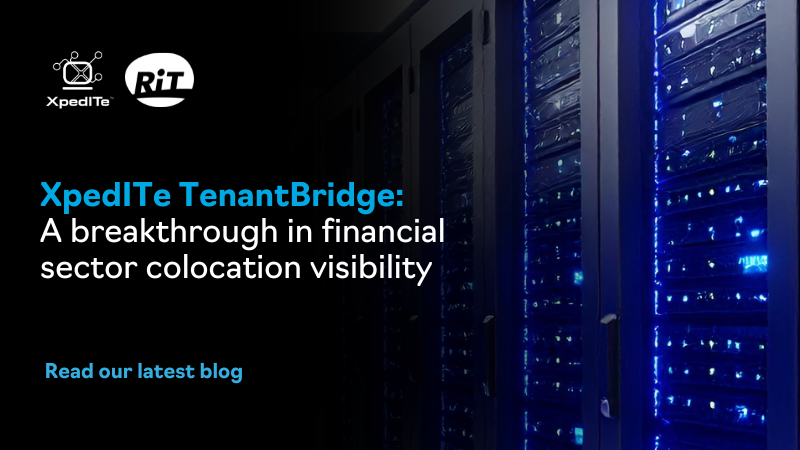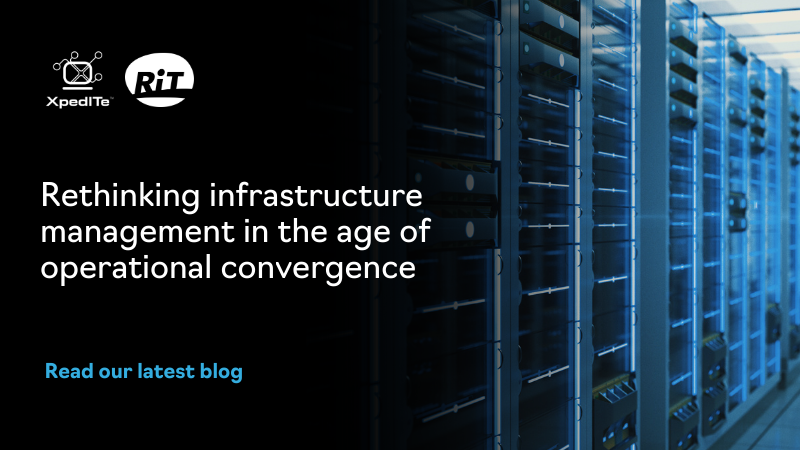ANTONIO SUÁREZ GARCIA
Global Product Manager
TOP 10
DCIM VENDORS
The new kids on the block take a stand in its obligatory evolution

You do not need a master’s degree in economics to foresee sustained growth in the data centre market given that governmental, commercial and societal demand for digital services continues to rise exponentially.
Satisfying customers’ insatiable appetite for faster, more resilient networks in the years to come will not, however, be without considerable challenges for the sector.
Operators, for example, are already having to juggle an ever evolving ask with the fiscal impact of a global energy crisis and tightening environmental regulations.
Consequently, the need for a comprehensive DCIM [Data Centre Infrastructure Management] solution that can oversee the orchestration and optimisation of services and resources to deliver both profitable and sustainable operations has never been greater.
Rather than merely serve as a monitoring tool, a fit for purpose – and, importantly, fit for tomorrow – DCIM should provide comprehensive integration with a broad diversity of devices and software systems; bridge the gaps between ‘grey’ and ‘white’ space; and afford users an increasing degree of intelligence and automation.
There are a plethora of platforms purporting to do precisely these things, but how do you choose between them? We’ve scored the offerings of the industry’s tech trailblazers – scoring each against the themes of comprehensiveness, customisation and usability, integration and innovation – to help you identify the best in class.
XpedITe
An all-in-one offering and the only entirely web-based DCIM solution on the market, XpedITe is supplied as a managed service by RiT Tech – pioneers in the field of automated infrastructure management. The company’s experience has delivered a comprehensive platform that considers grey (facility) and white space (IT) and the management of interdependencies.
With realistic and interactive 2D and 3D visualisation, it features advanced asset management, connectivity and power management, and customisable reports and dashboards. XpedITe utilises advanced algorithms and machine learning for improved provisioning and capacity management.
Sunbird (DC Track+PowerIQ)
Sunbird has been flying high since becoming a standalone DCIM company following Legrand’s acquisition of Raritan in 2015. The Raritan legacy is there for all to see with a bias towards its devices in the software, but the solution has forged a strong reputation. It is divided into two components – PowerIQ for monitoring and DC Track for management – both of which have evolved to become a formidable team.
Sunbird’s monitoring, dashboard and reporting flexibility and pre-defined integration plugins help it to stand out of from the DCIM crowd, with only its occasionally overly complex menus detracting from its user experience.
Eaton Optimum Path
Eaton’s DCIM proposal comprises a Visual Power Manager [VPM] and Visual Capacity Optimisation Manager [VCOM], which derive from its acquisition of Optimum Path in 2016. The latter’s Visual Datacentre Suite was previously distributed as OEM for other companies to exploit.
The solution provides a complete set of capabilities, especially remarkable among them is its 3D visualisation, which extends to capacity layers, dashboards and thermal tracking.
Nlyte
Acquired in October 2021 by Carrier, Nlyte is a well-known player – a veritable DCIM classic having been an ever present on the market for the past 16 years. Its recent history has not seen an abundance of changes, but it continues to offer a comprehensive set of capabilities.
The Nlyte solution is divided into three products – Assets Optimizer, Energy Optimizer and Data Center Monitoring, an effective toolset that offers pre-defined integrations with third-party systems and vendors’ configuration management database and IT service management software.
Schneider (DCE/ITE+ITA)
Subject to a succession of name changes over the course of the past few years, Schneider Electric’s Ecostruxure portfolio provides insights into distinct aspects of the DCIM panorama – particularly in relation to power-related management.
Datacenter Expert and its on-cloud sibling, IT Expert, deliver a powerful monitoring and alerting tool, while IT Advisor – formerly Datacenter Operation – offers the management-oriented part of the solution. Combined, their standout capabilities come in the form of power recommendations and usability. Each of the components can work in tandem with other Ecostruxure products and enable pre-integrated monitoring of Schneider’s BMS and EMS systems.
Panduit SmartZone
With a strong focus on IT asset and connectivity management, it will come as no surprise that Panduit’s DCIM solution owes its origins to the company’s AIM software. Its capabilities stretch beyond its ancestry though, with features such as improved environmental monitoring having been added to its repertoire.
Panduit SmartZone Cloud joined the stable in May 2022, reinforcing the company’s global offering and aligning with new hardware such as rack PDUs and UPS.
Device42
Device42’s approach to DCIM is distinct to its competitors. While the majority first consider the physical infrastructure and add logical layers to their modelling, Device42 starts with the logical.
Consequently, rather than trying to document the physical details of an entire date centre, the solution is more in keeping with an IT tool – focusing predominantly on a CMDB, discovery and IPAM approach.
Being different is not necessarily to the detriment of Device42’s offering, but it is worth noting that other DCIM peers are including more and more IT management aspects in their proposals.
Patch Manager
Patch Manager has been developing software for cable and asset management since 2002 and its DCIM approach follows suit. A mature product, it has several commendable features, which include its 2D and 3D visualisation of assets, complete management of lifecycle and asset properties and a comprehensive cable and network management tool. The offer is completed with OSP Building and office and building solutions.
NetTerrain DCiM (Graphical Networks)
Founded in 2009 and with a strong IT and network management background, Graphical Networks offers NetTerrain DCiM alongside a few other OSP and logic layer solutions.
Effective IT asset and connectivity management and good visualisations are among the solution’s major plus points, while power management and monitoring take more of a back seat. Its range of DCIM features should keep evolving as new iterations are released.
FNT
Previously known as Command, the FNT suite offers the majority of the classical DCIM pillars, such as asset and network management and power management, complemented with simple but effective visualisations.
DCIM seems to be a particular strength of this German company when compared to its CMDB or IT asset management.
LATEST NEWS



